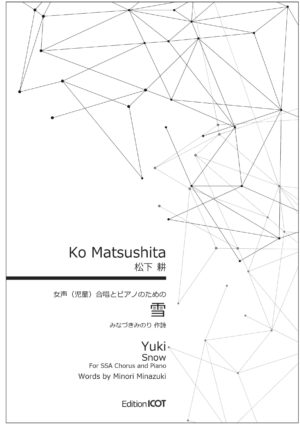Description
Composer: Barna Szabó
Parts: SSSAAA
Accompaniment: Paino
Language: Latin
Performance Duration: 5’00”
Pages: 12
[Performance Video]
The short Psalm XV, consisting of only 5 verses, is not one of the most frequently set to music in the Bible.
Here King David sings of the character and praise of a pious, honest, godly, righteous man. He emphasizes that only those who love their neighbour, do no wrong to them intentionally, are just, are honest, and speak the truth from their hearts, can enter the holy place – metaphorically, salvation.
The reward of the righteous man of the Old Testament is that if he ‘doeth these things shall never be moved’. (King James Version, 1611).
These last words, with which similar turns of phrase are found in very many Psalms and also here, are the most beautiful in meaning and sounding in all translations, and form the central part of my humble work.
The words in aeternum are sung over the ostinato expressing the permanence and timelessness of eternity in a polar opposite key, and within that on the notes outside of the scale, in A-sharp major, pianissimo, by two solo voices. This tries to evoke, vaguely at a distance, the otherworldly spheres of the righteous, who have won their reward.
After the vision, the short code reiterates the warning of the doings and conditions of the present world: qui facit haec, that is, eternity means salvation only for the righteous.
In this setting, composed of motet-like interlocking sections, the role of the piano is similar to that found in some of Bach’s chorale preludes (BWV645, 649), or in some of György Orbán’s works (Missa Sexta: Benedictus/Agnus Dei, Missa Nona: Benedictus, Passion to Hungarian Words, Hymnus etc.): the ritornello-like, Mixolydian musical material heard in the introduction is carried throughout the work, sometimes recognisably, sometimes as restatement, sometimes varied, sometimes only through certain part-motives.
Since one of the downward sloping melodies, consisting of thirds, also appears throughout the women’s parts, the piece can easily be felt to be monothematic.
The weaving of the work is strongly polyphonic and draws directly on 16th-century vocal styles and techniques: small, scalelike rather than leaping melodic steps, imitation, complementary notes, voices and rhythms, and even the madrigalistic tradition of word-painting appear: in the word ‘monte’, the dome-shaped arc of the melody recalls the outline of Zion, the holy mountain mentioned in the Psalm.
Printed score and digital score are prepared. Please choose one below.
[Performance Video]

